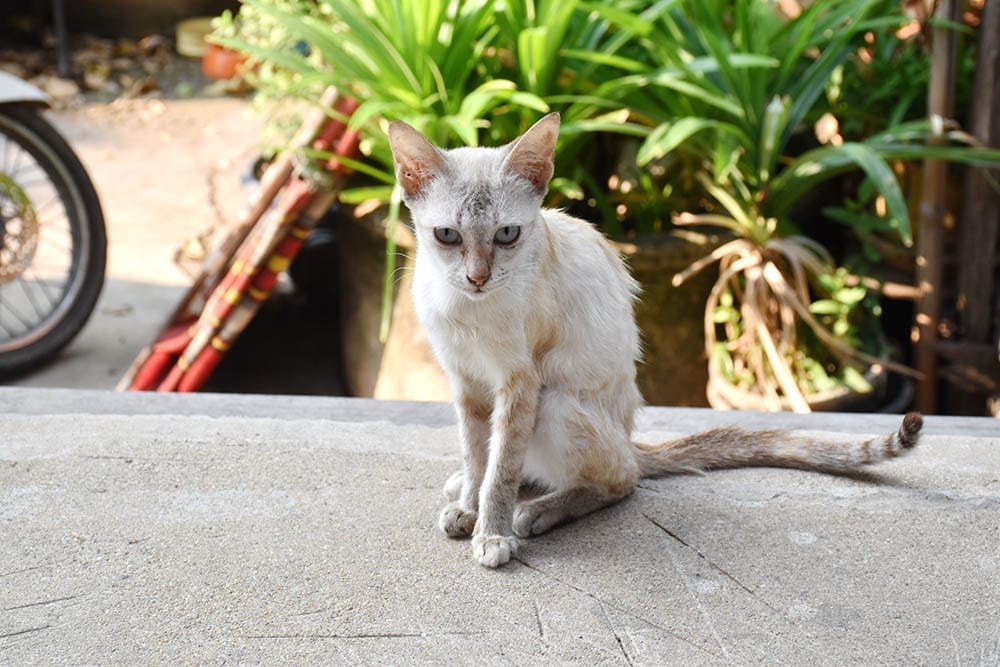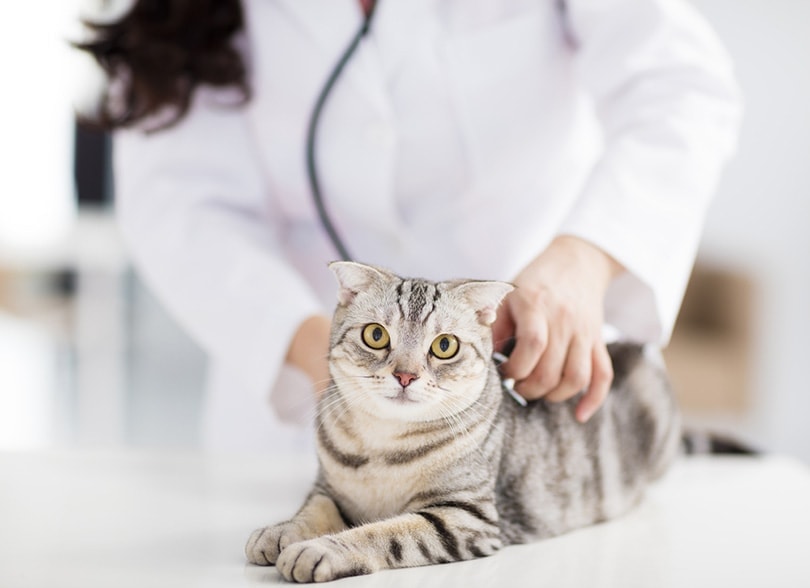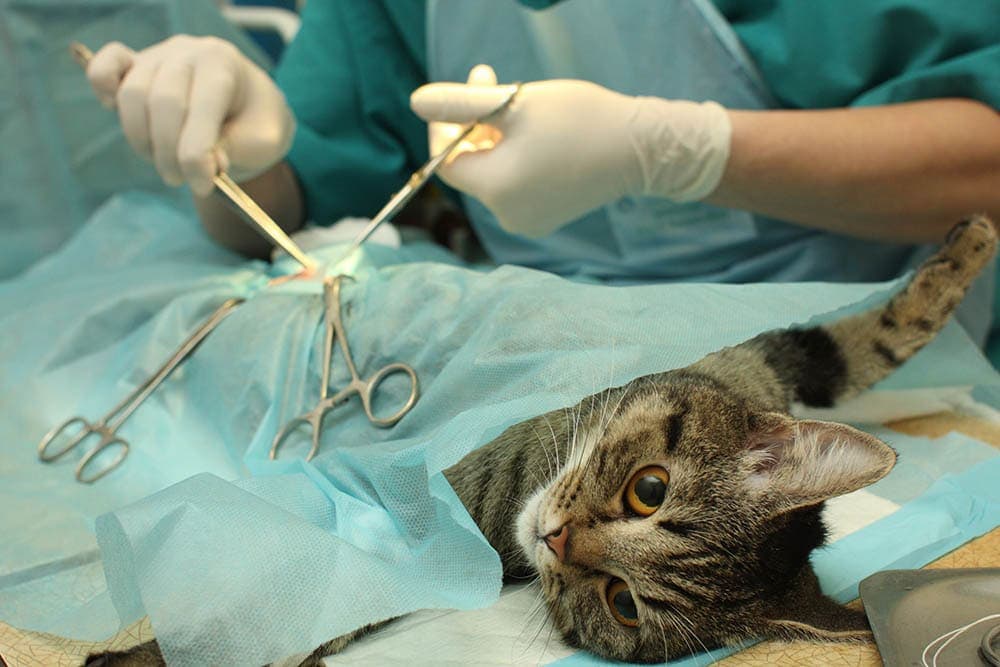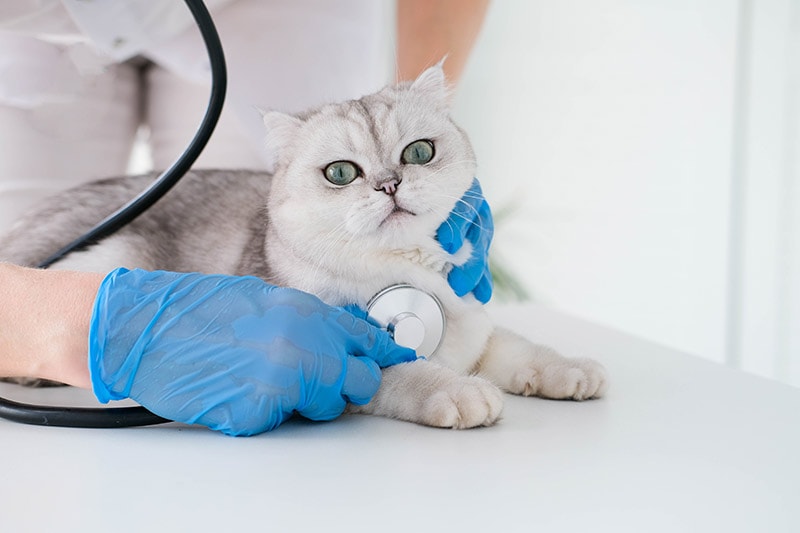Hemangiosarcoma in Cats: Symptoms, Causes, and Treatment (Vet Answer)
Updated on

Click to Skip Ahead
Hemangiosarcomas are not to be taken lightly, no matter what species they occur in. Arising as a form of cancer that spreads from blood vessels, they can occur anywhere in the body. Once they occur, they can then spread throughout the body in a process called metastasis. They also tend to be highly invasive of local tissues that they arise within, causing damage to these areas, and making them nearly impossible to remove. Although this is a rare form of cancer in cats, it carries serious implications.
Read on to learn more about hemangiosarcomas in cats: symptoms, causes, and treatments.
What is Hemangiosarcomas in Cats?
Hemangiosarcoma is a form of cancer that is relatively rare in cats, compared to in dogs. It arises from malignant blood vessel cells, and can spread anywhere throughout the body—including to different organs, such as the skin, liver, spleen, or any other area rich with blood vessels.
Cats that experience hemangiosarcomas often feel unwell, and show signs of weight loss, lethargy, inappetence, change in behavior, and other concerning signs. When they occur on the skin, they can range from small and unconcerning red changes, to larger, actively bleeding growths. When the occur internally within organs, often the illness in a cat is far more subtle, and just presents as general signs of unwellness.

Where Are the Symptoms of Hemangiosarcomas in Cats?
Early hemangiosarcomas, when small and not invasive, may have more subtle signs than later stages of the disease.
- Lethargy
- Hiding or other changes in behavior
- Weight loss
- Inappetence
- Changes to the skin, including growths, bleeding, or scabbing
- Pale gums or skin
- Enlargement of abdominal organs
- Bloated abdomen
- Abdominal pain or discomfort
- Panting or open mouth breathing
What Causes Hemangiosarcomas in Cats?
The truth is, no one knows the underlying cause of hemangiosarcomas in cats, which makes prevention almost impossible.
As a type of cancerous growth, comprised of the components of blood vessels, they can occur almost anywhere. However, they tend to be categorized into two main types: cutaneous, and visceral (involving internal organs). When they occur on the skin, they are called “cutaneous hemangiosarcomas”. Visceral hemangiosarcomas are named after the organ that they originate within. So, for instance, one in the spleen might be called a splenic hemangiosarcoma.
Because the blood vessels allow an easy means to spread throughout not only local tissues, but distant ones as well, these cancers tend to spread quite easily to other organs in the body—in addition to being locally invasive. This widespread invasion also means that the clinical effects are often similarly striking.
How Can You Care for a Cat with Hemangiosarcoma?
Once a hemangiosarcoma has been diagnosed, the ideal care involves working closely with your veterinarian and following their guidance. In rare instances, an attempt at surgical removal may be discussed, though surgery is often unrewarding, as the hemangiosarcomas will often recur at the same site. If in the skin, if may provide a temporary cessation of clinical signs, or rarely, remove the disease altogether.
In later stages of the disease, palliative care may be the only realistic option. Palliative care is a term for care that is aimed at comfort and reducing the impacts of disease, while not directly treating a disease itself. For cats with hemangiosarcomas, this may mean pain medications to help with any discomfort, appetite stimulants to help keep their interest in food going, or it may simply be lots of love, food, attention, and quiet time at home.
Your vet will help guide you on what the best and most appropriate care options are for your cat, given their particular circumstances, and your wishes.

What Are The Treatment Options for Cats with Hemangiosarcomas?
As stated earlier, treatment options tend to be limited. Sometimes cutaneous hemangiosarcomas, if small, can be removed via surgery, with the expectation that they more than likely will grow back. Chemotherapy doesn’t seem to help with these types of cancer, nor is there a specific medication that inhibits their growth. And without a known underlying cause, prevention is near impossible.
Visceral hemangiosarcomas can also have surgical removal attempted, though similar poor outcomes are often expected. Because they can cause internal bleeding that can be active, even prior to surgery, sometimes blood transfusions can also be a necessary part of these operations.
What should I do if I suspect my cat might have a hemangiosarcoma?
Speak with your vet if you suspect your cat might have a hemangiosarcoma! Always get photos to document the original size and location of it, and to help you monitor how quickly it is changing as well.
What can look similar to hemangiosarcomas in cats?
Many other skin cancers can have similar appearances to hemangiosarcomas, such as any tumor that causes a change in the appearance of the skin. The most common skin tumors in cats tend to be: squamous cell carcinomas, and mast cell tumors—both of which may look like hemangiosarcomas. Sunburn on the face and ears of light-coated cats can also look a lot like hemangiosarcomas in certain instances.
For visceral hemangiosarcomas, any condition that can cause internal bleeding, or mass organ failure can present similarly to hemangiosarcomas. Therefore, blunt force trauma, or primary cancers of any of the abdominal organs, can present similarly to hemangiosarcomas.
Conclusion
Although uncommon in cats, hemangiosarcomas are severe and highly concerning when they do occur. The cutaneous form is easier to recognize, and may be potentially easier to provide temporary treatment for. Most hemangiosarcomas that are treated will recur, as removal is ultimately quite difficult. For this reason, mortality from this disease is unfortunately high.
See also:
Featured Image Credit: Benchamaporn Kanlapungha, Shutterstock












